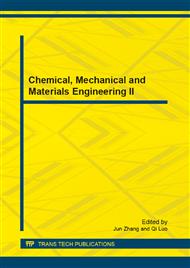p.444
p.451
p.456
p.462
p.468
p.474
p.479
p.485
p.491
Influence of Punch Velocity and Strength Matching on the Quality of SPR with Half-Hollow Rivet Based Numerical Simulation
Abstract:
With the increasing application of lightweight multi-materials in vehicle body, the SPR (self-piercing riveting)with half-hollow rivet is used to connect hybrid metals due to its simple operation and reliable connection. In this paper, appropriate size parameters of half-hollow rivet and die are selected according to sheets’ thickness after the determination of hybrid metal materials, namely FAS2205 dual phase steel, AA2036 aluminum alloy, AA7050 aluminum alloy, AA6061 aluminum alloy and 460E high strength steel. The finite element model of SPR with half-hollow rivets is constructed and the accuracy of which is proved by comparing with the experiment in the relative reference. What’s more, the Johnson-Cook constitutive model is taken as material model to simulate the plastic and hardening behaviors during riveting process. The influence on joint quality of the strength matching of rivet/bottom sheet is studied through numerical simulation and direct observation, and the relationship schematic diagram between them is gained. Meanwhile, the riveting joints at several uniform loading velocities are simulated and the quality of which are analyzed. The research results show that the appropriate matching of rivet to the bottom sheet strength is a key prerequisite for joint quality and the punch velocity plays an important role on the riveting joint quality and efficiency of assembly.
Info:
Periodical:
Pages:
468-473
Citation:
Online since:
May 2013
Authors:
Keywords:
Price:
Сopyright:
© 2013 Trans Tech Publications Ltd. All Rights Reserved
Share:
Citation:


